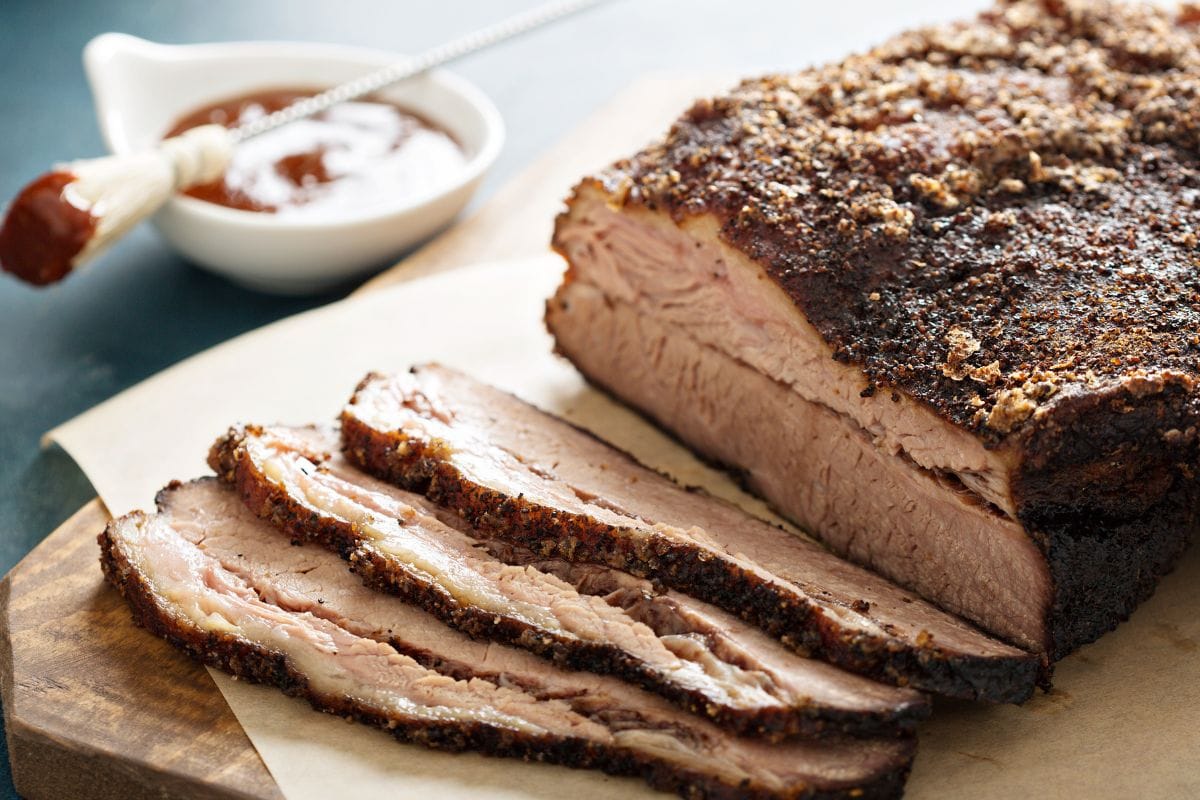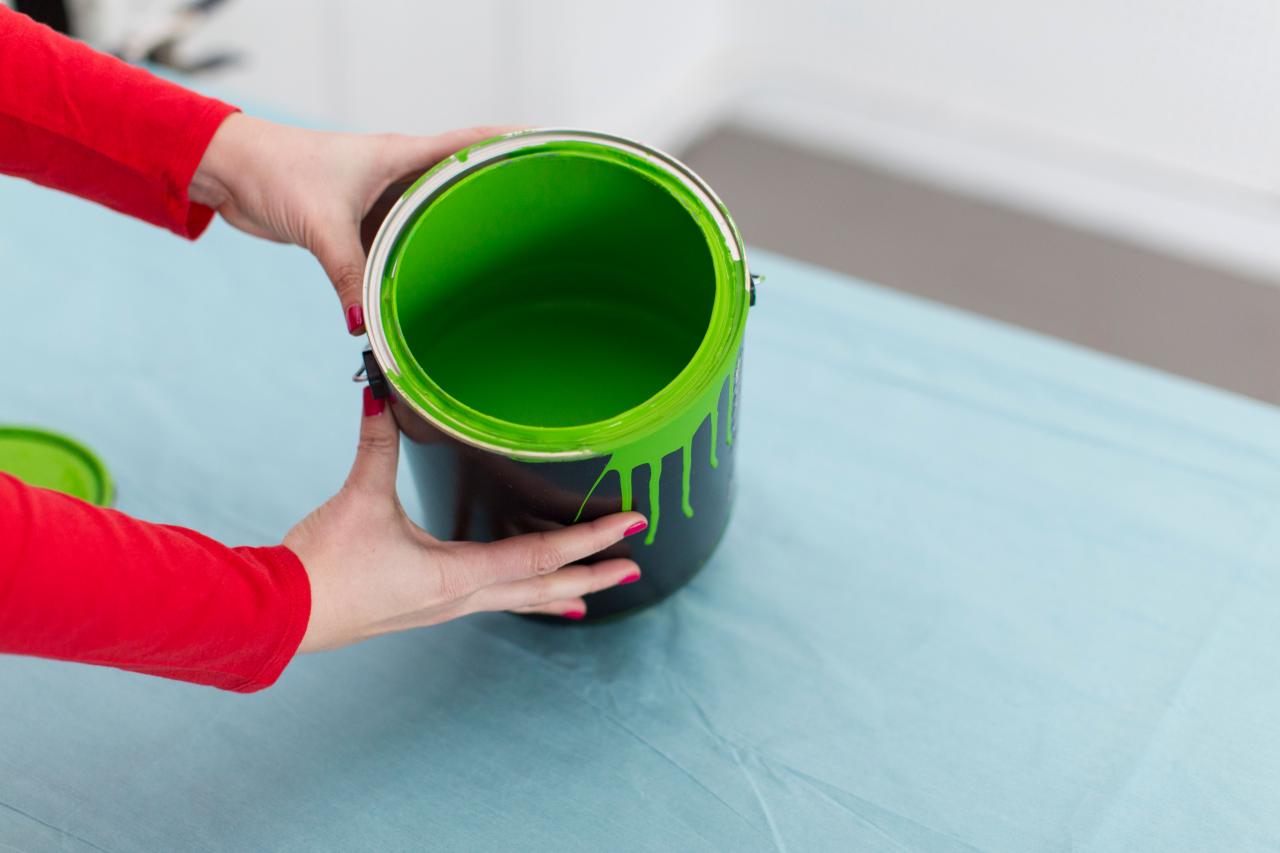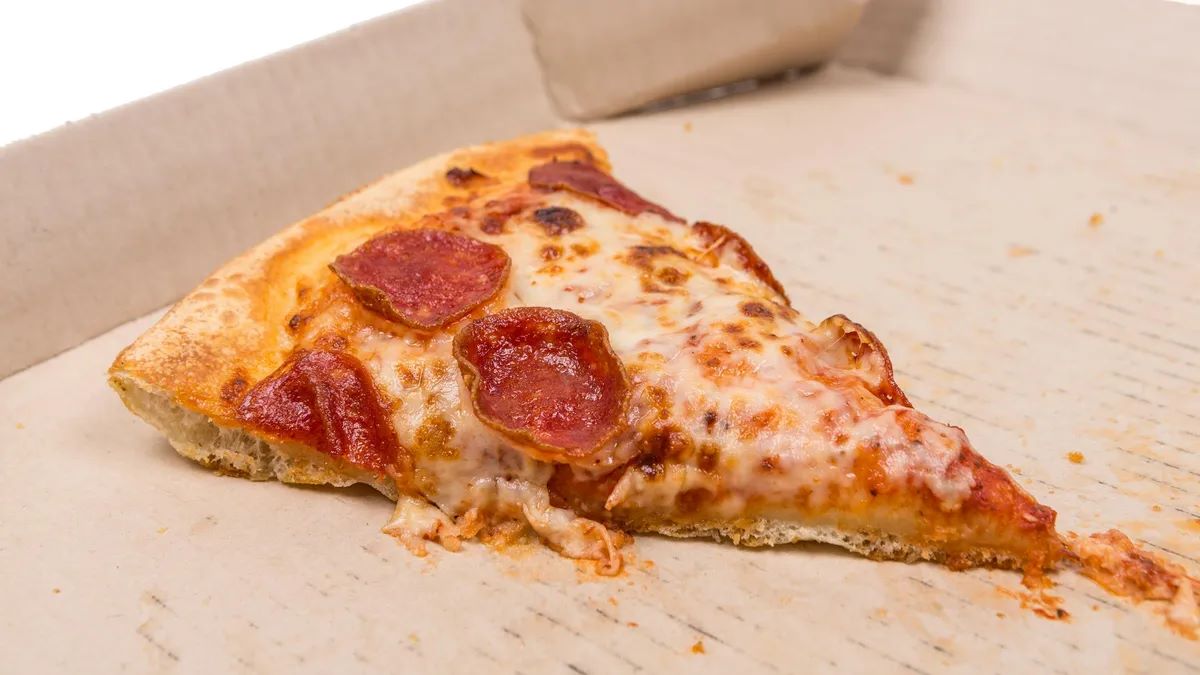

Articles
How To Store Leftover Brisket
Modified: February 22, 2024
Learn how to store leftover brisket and keep it fresh for later use. Read our informative articles on the best methods for preserving and storing your delicious brisket leftovers.
(Many of the links in this article redirect to a specific reviewed product. Your purchase of these products through affiliate links helps to generate commission for Storables.com, at no extra cost. Learn more)
Introduction
Leftover brisket is a popular and delicious leftover that you want to make sure to store properly to avoid the risk of spoilage. Whether you had a family gathering or smoked a large brisket for a special occasion, knowing how to store it correctly will help you enjoy the flavor for an extended period of time.
Properly storing leftover brisket not only ensures that it remains safe to eat, but it also allows you to savor the tender and smoky goodness for days or even weeks after the initial cooking. In this article, we will explore the various methods of storing leftover brisket, including refrigeration, freezing, and vacuum sealing. We will also provide tips on how to reheat the stored brisket and creative ways to repurpose it into mouthwatering dishes.
So, if you find yourself with more brisket than you can eat in one sitting, don’t worry. By following these storing and reheating techniques, you can make sure that none of that delectable meat goes to waste.
Key Takeaways:
- Properly storing leftover brisket not only ensures its safety and flavor but also offers convenience, cost savings, versatility, and helps minimize food waste. Refrigeration, freezing, and vacuum sealing are effective methods for preserving this culinary treasure.
- Reheating stored leftover brisket can be done using various methods such as oven, stovetop, microwave, or sous vide, ensuring the meat retains its tenderness and flavor. Additionally, repurposing leftover brisket into creative dishes like tacos, grilled cheese sandwiches, and fried rice adds a delightful twist to mealtime.
Read more: How To Store A Brisket
Why You Should Store Leftover Brisket
Leftover brisket is a culinary treasure that deserves to be protected and preserved. Here are a few reasons why you should consider storing your leftover brisket:
1. Convenience:
Storing leftover brisket allows you to enjoy a quick and delicious meal without the need for extensive preparation. Instead of cooking a new meal from scratch, you can simply pull out the stored brisket and reheat it, saving you time and effort.
2. Cost Savings:
Brisket is a flavorful cut of meat that can be quite expensive. By storing the leftovers, you can stretch your budget and maximize the value of your initial investment. Plus, you won’t have to worry about the leftovers going to waste.
3. Versatility:
Leftover brisket can be used in a variety of ways, making it a versatile ingredient. From sandwiches and tacos to salads and soups, the options are endless. By storing the leftover brisket, you have the freedom to get creative and explore different dishes.
Read more: How To Store Brisket In Fridge
4. Maintaining Flavor:
When brisket is stored properly, it retains its flavor and tenderness. The slow-cooked and smoky flavors develop even further as the brisket sits in the refrigerator or freezer, intensifying the taste and creating a mouthwatering experience when reheated.
5. Avoiding Waste:
Throwing away leftover brisket is a waste of both money and food. By storing it properly, you can minimize food waste and make the most of your leftovers. It’s an eco-friendly choice that benefits both your wallet and the environment.
Now that you understand the benefits of storing leftover brisket, let’s dive into the different methods you can use to ensure its safekeeping.
Important Tips for Storing Leftover Brisket
Properly storing leftover brisket is essential to maintain its quality and safety. Follow these important tips to ensure that your brisket remains delicious and free from spoilage:
1. Chill it Quickly:
After your dining experience, it’s crucial to refrigerate or freeze the leftover brisket as soon as possible. Leaving it at room temperature for too long can promote bacterial growth and increase the risk of foodborne illnesses.
Read more: How To Store And Reheat Brisket
2. Divide into Portions:
If you have a large amount of leftover brisket, consider dividing it into smaller portions before storing. This way, you only have to thaw or reheat the amount you need, preventing waste and making meal planning easier.
3. Choose the Right Containers:
For refrigeration, store the brisket in airtight containers or wrap it tightly in plastic wrap or aluminum foil to prevent air exposure. For freezing, use freezer-safe bags or containers to avoid freezer burn and maintain the quality of the meat.
4. Label and Date:
Always label your containers or bags with the date of storage. This helps you keep track of how long the brisket has been stored and ensures that you consume it within the recommended time frame.
5. Follow Safe Storage Times:
Brisket stored in the refrigerator should be consumed within 3-4 days. If you plan to store it for longer, freezing is the best option. Frozen brisket can be safely stored for up to 3 months, maintaining its quality and flavor.
Read more: How To Store Leftover Sushi
6. Avoid Repeated Thawing and Freezing:
While it is possible to refreeze previously frozen brisket, it is best to avoid repeated thawing and freezing as it can affect the texture and taste of the meat. Plan ahead and thaw only the amount of brisket you intend to use.
7. Proper Storage Temperatures:
Keep your refrigerator temperature at or below 40°F (4°C) and your freezer temperature at 0°F (-18°C) or below to ensure the safe storage of leftover brisket and other perishable foods.
By following these important tips, you can safeguard your leftover brisket and enjoy it at its best quality whenever you’re ready to indulge.
Method 1: Refrigerating Leftover Brisket
Refrigerating leftover brisket is a common method for short-term storage, allowing you to enjoy the meat for a few more days. Here’s how you can refrigerate your leftover brisket:
1. Cool the Brisket:
Before refrigerating, allow the brisket to cool down completely. Leaving it at room temperature for too long can lead to bacterial growth. You can place the meat in the fridge uncovered for about an hour to speed up the cooling process.
Read more: How To Store Leftover Champagne
2. Store in Airtight Containers:
Transfer the leftover brisket into airtight containers or wrap it tightly in plastic wrap or aluminum foil. This will help prevent air exposure, which can cause the meat to dry out and lose its flavor.
3. Label and Date:
Remember to label the containers with the date of storage. This will help you keep track of how long the brisket has been stored and ensure that you consume it within the recommended 3-4 day timeframe.
4. Place in the Refrigerator:
Put the containers of brisket in the refrigerator, making sure they are stored in a designated area where they won’t come into contact with raw meats or other perishable items.
5. Reheat Properly:
When you’re ready to enjoy your refrigerated leftover brisket, make sure to reheat it properly to ensure it reaches a safe internal temperature of 165°F (74°C). This can be done in the oven, stovetop, or microwave.
Refrigerating leftover brisket is a convenient option when you plan to consume it within a few days. However, if you need to store the brisket for an extended period, freezing is the better option, which we’ll explore next.
Read more: How To Store Leftover Soup
Method 2: Freezing Leftover Brisket
Freezing leftover brisket is an excellent option if you want to extend its shelf life and enjoy it at a later time. Properly frozen brisket can be stored for up to three months without sacrificing its flavor and quality. Here’s how you can freeze your leftover brisket:
1. Cool the Brisket:
Allow the leftover brisket to cool down completely before freezing. You can place it in the refrigerator for an hour or so to expedite the cooling process.
2. Wrap the Brisket:
Wrap the brisket tightly in plastic wrap or aluminum foil to create an airtight seal. This will help prevent freezer burn and maintain the moisture and flavor of the meat.
3. Double Bagging:
If you prefer an extra layer of protection, place the wrapped brisket in a freezer-safe plastic bag or a vacuum-sealed bag. Double bagging helps to prevent any potential air exposure and further safeguards the meat from freezer burn.
4. Label and Date:
Remember to label the bag or container with the date of storage. This ensures that you can keep track of how long the brisket has been frozen and consume it within the recommended three-month timeframe.
5. Store in the Freezer:
Place the wrapped and labeled brisket in the freezer, making sure to organize your freezer space efficiently. It is best to store the brisket in a single layer to promote even freezing and easier thawing later on.
6. Thawing Before Use:
When you’re ready to use the frozen brisket, it’s best to thaw it in the refrigerator overnight. Slow thawing in the fridge helps retain the moisture and tenderness of the meat.
Now that you know how to properly freeze leftover brisket, you can store it for an extended period and enjoy the smoky goodness whenever you crave it. But if you want to take storage to the next level, vacuum sealing is an excellent option, which we’ll explore next.
Method 3: Vacuum Sealing Leftover Brisket
Vacuum sealing is a highly effective method for storing leftover brisket. It not only extends the shelf life of the meat but also preserves its flavors and textures better than other storage methods. Here’s how you can vacuum seal your leftover brisket:
Read more: How To Store Leftover Buttercream
1. Cool and Wrap the Brisket:
Before vacuum sealing, make sure the leftover brisket has cooled down completely. Once cooled, wrap the brisket tightly in plastic wrap or aluminum foil to protect it during the vacuum sealing process.
2. Prepare the Vacuum Sealer:
If you own a vacuum sealer, ensure that it is clean and in good working condition. Check the instructions for your specific machine to learn how to use it properly.
3. Place in Vacuum-Seal Bag:
Insert the wrapped brisket into a vacuum-seal bag. Position the meat in a way that allows for easy sealing. Leave enough space at the top of the bag to accommodate the sealing process.
4. Vacuum and Seal:
Follow the instructions on your vacuum sealer to remove the air from the bag and create a tight seal. The vacuum sealer will remove the air, creating a vacuum seal that locks in the freshness of the brisket.
Read more: How To Store Leftover Banana
5. Label and Date:
Label the sealed bag with the date of storage. This will help you keep track of how long the brisket has been stored and ensure that you consume it within a reasonable timeframe.
6. Store in the Freezer:
Place the vacuum-sealed brisket in the freezer for long-term storage. The vacuum sealing process helps to prevent freezer burn and maintain the quality of the meat.
7. Thawing Before Use:
To thaw the vacuum-sealed brisket, simply transfer it to the refrigerator and let it thaw slowly overnight. This gentle thawing process helps preserve the texture and flavor of the brisket.
Vacuum sealing your leftover brisket provides an airtight and secure storage option, keeping the meat fresh and tasty for an extended period. Whether you’re preparing for a special occasion or simply want to have brisket on hand for future meals, vacuum sealing is a fantastic method to ensure high-quality preservation.
How to Reheat Stored Leftover Brisket
When it comes to reheating stored leftover brisket, there are several methods you can use to bring it back to its juicy and flavorful state. Here are some options to consider:
Read more: How To Store Leftover Coffee
1. Oven:
To reheat brisket in the oven, preheat it to around 300°F (150°C). Place the brisket in an oven-safe dish, cover it with foil to prevent drying out, and heat it for about 20-30 minutes, or until it reaches an internal temperature of 165°F (74°C). This method helps maintain the tenderness and flavor of the brisket.
2. Stovetop:
If you prefer a quicker method, you can reheat the brisket on the stovetop. Start by adding a small amount of oil or butter to a skillet or frying pan over medium heat. Place the brisket slices in the pan and heat them for a few minutes on each side until they are warmed through and the desired temperature is reached.
3. Microwave:
The microwave is the fastest option for reheating leftover brisket. Place the sliced or chopped brisket on a microwave-safe plate and cover it with a damp paper towel to prevent it from drying out. Heat it in short intervals, stirring or flipping the meat occasionally, until it is heated through.
4. Sous Vide:
If you are looking for a method that will ensure precise temperature control and maintain the tenderness of the brisket, consider reheating it using a sous vide technique. Simply vacuum-seal the brisket, place it in a water bath set to the desired temperature (typically around 150°F or 65°C), and let it heat for 45 minutes to an hour. This method results in moist and perfectly reheated brisket.
Regardless of the method you choose, be mindful not to overcook the brisket during reheating, as it can become dry and tough. Keep a close eye on the temperature and texture to ensure the best results.
Now that you know how to reheat your stored leftover brisket, it’s time to explore some creative ways to use this flavorful meat.
Read more: How To Store Leftover Nachos
Creative Ways to Use Leftover Brisket
Leftover brisket is a versatile ingredient that can be used in a variety of mouthwatering dishes. Don’t let it go to waste – here are some creative ways to repurpose your leftover brisket:
1. Brisket Tacos or Nachos:
Shred or chop the leftover brisket and use it as a flavorful filling for tacos or as a topping for nachos. Pair it with your favorite salsa, guacamole, and cheese for a delicious Tex-Mex-inspired meal.
2. Brisket Grilled Cheese Sandwich:
Add a tasty twist to your classic grilled cheese sandwich by layering slices of leftover brisket between the cheese and bread. Grill it until the cheese melts and the brisket is warm. The result is a gooey and savory sandwich that will satisfy your taste buds.
3. Brisket Hash:
Create a hearty and flavorful brunch by using diced brisket in a hash. Sauté potatoes, onions, and bell peppers in a skillet, then add in the brisket. Cook until the ingredients are golden and crispy, and serve it with a sunny-side-up egg on top for an indulgent meal.
Read more: How To Store Leftover Pie
4. Brisket Sliders:
Make mini sandwiches or sliders using your leftover brisket. Place small portions of brisket on slider buns and top with your preferred condiments and toppings, such as coleslaw, pickles, or barbecue sauce. These bite-sized delights are perfect for appetizers, parties, or a quick snack.
5. Brisket Poutine:
Put a twist on the classic Canadian dish by adding leftover brisket to your poutine. Layer crispy fries with cheese curds and warm gravy, then top it off with warmed and shredded brisket. The combination of tender meat and savory flavors will take your poutine to the next level.
6. Brisket Shepherd’s Pie:
Give the classic shepherd’s pie a smoky makeover by incorporating chopped brisket into the filling. Layer the brisket with vegetables, such as peas, carrots, and corn, and top it with creamy mashed potatoes. Bake until golden and bubbly for a comforting and satisfying meal.
7. Brisket Fried Rice:
Add a punch of flavor to your fried rice by throwing in some chopped brisket. Sauté the rice with vegetables, scrambled eggs, soy sauce, and your diced leftover brisket. The combination of savory, smoky, and salty flavors will make this fried rice a new family favorite.
These are just a few examples of how you can transform your leftover brisket into delectable new meals. Get creative and let your taste buds guide you as you discover wonderful ways to enjoy every last bit of that leftover brisket.
Read more: How To Store Leftover Crawfish
Conclusion
Leftover brisket is a culinary treasure that deserves to be stored properly and enjoyed long after the initial meal. By following the methods outlined in this article, you can ensure that your leftover brisket remains safe, flavorful, and ready to be transformed into mouthwatering dishes.
Whether you choose to refrigerate, freeze, or vacuum seal your leftover brisket, each method has its benefits and timeframes for consumption. Refrigeration is ideal for short-term storage, while freezing and vacuum sealing provide longer shelf life without compromising taste and quality.
When reheating your stored brisket, consider using the oven, stovetop, microwave, or even sous vide cooking methods. Properly reheating ensures that the meat is warmed through, maintaining its tenderness and flavors.
Don’t limit yourself to traditional reheating – get creative! Explore the various ways you can repurpose your leftover brisket into mouthwatering dishes such as tacos, grilled cheese sandwiches, hash, sliders, poutine, shepherd’s pie, and fried rice. The possibilities are endless!
Remember to store your brisket in airtight containers, label them with the date of storage, and follow recommended storage times to ensure freshness and safety. Be mindful of proper thawing techniques and safe temperature zones to avoid any foodborne illnesses.
So, the next time you find yourself with leftover brisket, do not fret. With the knowledge gained from this article, you can store it properly, reheat it with precision, and transform it into amazing culinary creations. Now, go make the most of your leftover brisket and savor every delicious bite!
Frequently Asked Questions about How To Store Leftover Brisket
Was this page helpful?
At Storables.com, we guarantee accurate and reliable information. Our content, validated by Expert Board Contributors, is crafted following stringent Editorial Policies. We're committed to providing you with well-researched, expert-backed insights for all your informational needs.




0 thoughts on “How To Store Leftover Brisket”